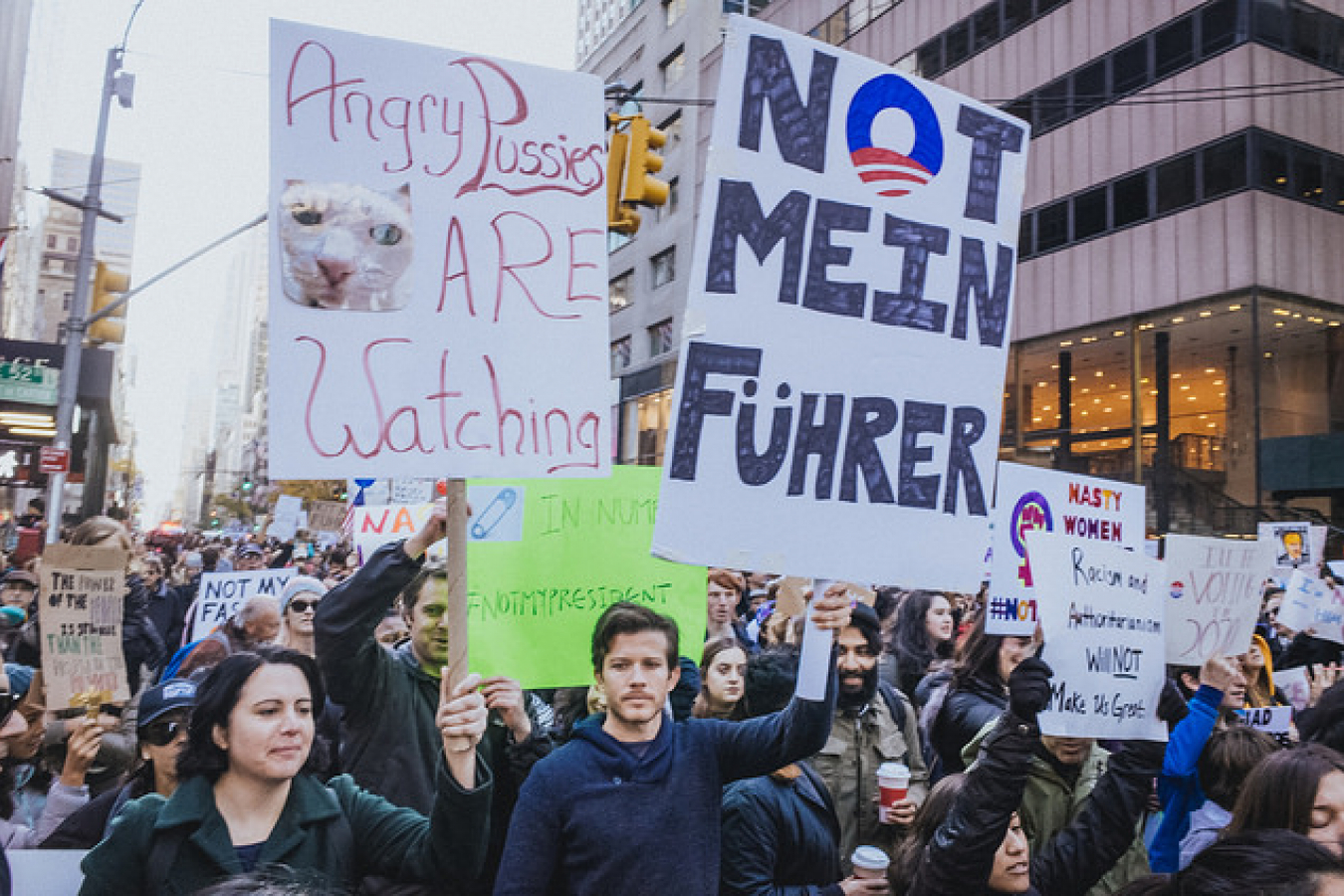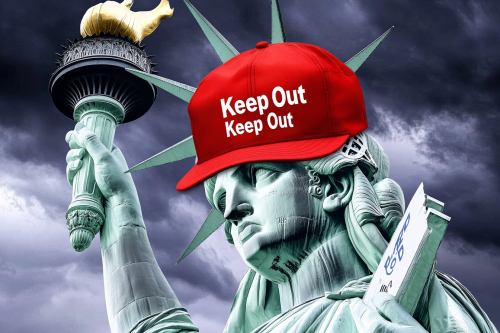Following his surprise US presidential election victory, President-Elect Donald Trump has vowed to deport up to three million immigrants convicted of criminal activities, regardless of whether they are in the US legally or illegally. Trump’s comments came during an interview broadcast on CBS program, “60 minutes.” Many of these immigrants have “green cards”
According to a report published in the New York Times, to execute his plan Trump would need a ‘much larger federal US immigration force than the one that currently exists in order to hunt down these immigrants and deport them.’
During the CBS interview, Trump’s comments about immigrants were much less controversial than those spouted during his election campaign, where he labelled many of them ‘rapists and criminals.’ Instead, he described many immigrants as ‘terrific people’ and stated that they would be ‘dealt with once the border is secured and criminals are deported.’
Sanwar Ali, Editor of workpermit.com News reviews Trumps immigration plans for America:
Donald Trump has been criticised for selecting a number of people as advisers who many will consider to be dangerous extremists. Richard Cohen President of the Southern Poverty Law Center one of the best known organisations that monitor “hate groups” had the following to say about Steve Bannon the Chief Strategist for Trump:
“In July, Bannon boasted that Breitbart News was ‘the platform for the alt-right.’ The alt-right, as we know, is simply a rebranding of white nationalism and is the energy behind the avalanche of racist and anti-Semitic harassment that plagued social media platforms…”
There may be a risk that if Trump is surrounded by extremists that this will encourage him to go ahead with some of his more extreme policies. It is to be hoped that the Senate and the House of Representatives will have a moderating influence on Donald Trump.
There was actually a big increase in deportations under Obama. There were more deportations under Obama than under any US President in history. Some immigrant groups referred to President Obama as “Deporter in Chief”. It seems that the new to be President Trump will also have that title!
Concerns should also be raised about inon-immigrant visa programs that are important for business and actually create jobs. It is already difficult and expensive enough obtaining L-1A and L-1B intra-company transfer visas and H-1B visas. It is not necessary to make it even more difficult to obtain these visas. E-2 and E-1 visas are also good for the US economy and jobs. These should also remain as they are.
Targeting immigrants for deportation
However, by setting a target of deporting up to three million immigrants from the US, it has led to questions about which immigrants Trumps plans to target for removal and how he could execute those plans on such a large scale.
Senior director of international migration policy at the Center for Migration Studies of New York, Kevin Appleby, said: “If he wants to deport two to three million people, he’s got to rely on tactics that will divide communities and create fear throughout the country.”
“He would have to conduct a sweep, or raids or tactics such as those, to reach the numbers he wants to reach. It would create a police state, in which they would have to be aggressively looking for people,” Mr Appleby added.
Sources say that understanding Trump’s motives is crucial, especially since the president elect’s campaign was heavily focussed on building a wall at the US border with Mexico and deporting convicted criminals.
On Monday, November 14, outgoing president Barack Obama urged the incoming president to ‘keep his executive actions in place, which have spared immigrants brought to the US illegally as children.’
Criminals a priority for deportation of immigrants
When quizzed on whether he would aim to remove ‘millions and millions of undocumented immigrants’ from the US, during the CBS interview, Trump responded saying that his top priority would be to ‘exile people that are criminals and have a criminal record.’
The president-elect said: “What we are going to do is get the people that are criminals and have criminal records — gang members, drug dealers, we have a lot of these people, probably two million, it could be even three million. We are getting them out of our country or we are going to incarcerate. But we’re getting them out of our country, they’re here illegally.”
The number of ‘removable criminal aliens’ in the United States has been estimated to be 1.9 million by the Obama administration. This figure is inclusive of those that have US green cards for legal permanent residency and those who hold temporary visas, plus those with a criminal record for non-violent offences such as theft, not just those found guilty of crimes associated with gang-related violence.
Director of policy studies at the Center for Immigration Studies – an anti-immigration group - Jessica M. Vaughan said: “They certainly have that many to start.”
However, even if Mr Trump’s calculations are correct – and they’re disputed by many immigration activists – it’s unclear whether Trump could execute deportations on such a scale without ‘violating due process.’
The magnitude of what Trump is proposing is fraught with barriers. In the case of most convicted criminals, they would have to be processed through the immigration court system before they can officially be deported. The immigration courts are currently experiencing severe backlogs, which means that obtaining a deportation order could take months – even years.
Meanwhile, hundreds of thousands of immigrants are currently serving prison sentences that under current US law cannot be reduced. Official figures estimate that 183,000 immigrants had been convicted of crimes as of June 2016. These criminals also had deportation orders against them so they could be removed from the US quickly.
Mr Trump’s approach to deporting immigrants is not dissimilar to president Obama’s, which also focussed US immigration enforcement on those convicted of crimes. In 2014, Obama’s administration put procedures in place instructing agents to target criminals as a matter of priority when carrying out operations.
According to figures released by Immigration and Customs Enforcement (ICE), as of 2015, most of the 235,413 people (59 per cent) deported from the United States had a criminal record, while 41 per cent were exiled for violating US immigration rules.
Director at the New York University School of Law office of the Migration Policy Institute – a nonpartisan research group – Muzaffar Chishti, said: “Under the Obama administration we have already managed to calibrate our policy with heavy emphasis on criminal aliens.”
Obama criticised for deportations
Official data indicates that Mr Obama has overseen the deportation of an estimated 2.5 million immigrants since taking office on January 20, 2009, which has drawn heavy criticism from several advocacy groups.
Obama’s actions were part influenced by a need to gain political backing for a wider overhaul of US immigration laws that would have led to a path to citizenship for immigrants in the country illegally.
According to the New York Times report, under a program known as Secure Communities - an initiative that has since been scrapped - the Obama administration utilized digital fingerprints shared by local law enforcement to trace and deport immigrants who had committed crimes.
It’s understood that ICE partnered with local authorities in order to prioritize the arrest and detention of foreign criminals. A combination of the Secure Communities scheme and ICE involvement led to the deportation of approximately 400,000 people per year during Obama’s first term.
According to Mr Appleby, for Trump to increase that number it would ‘certainly require reinstituting a program like Secure Communities and employing vastly more US immigration agents, as well as using more aggressive tactics to find and remove immigrants who may have broken the law.’
Resistance to Trump’s immigration plans
However, it’s likely that Trump will encounter strong resistance from many US cities and counties should he plan to resurrect programs of close cooperation between local law enforcement and federal immigration authorities.
Trump faces the prospect of legal challenges that have rejected any sort of collaboration. However, Trump has threatened to withdraw federal funding for cities that fail to assist federal agents in clamping down on illegal immigrants.
Yet, Trump’s threats were brushed off by some city leaders. At a recent news conference, Rahm Emanuel, the Mayor of Chicago said: “Chicago is a sanctuary city or immigrants. The election of Trump won’t change this. It’s important for immigrant families and individuals to know this, Chicago is your home.”
Meanwhile, Charlie Beck, the Los Angeles police chief said that his force would not change its stance on collaborative policies: “We are not going to work in conjunction with Homeland Security on deportation efforts. That is not our job, nor will I make it our job.”
While Trump is adamant that he will see this through, the reality is that he will find it tough to gain support from city and county law enforcement agencies to help with the tracing of illegal immigrants residing in the United States.




